From birth, children use their five senses to explore and learn about the world around them. Sensory discovery through play is an important part of childhood development. Mum of two Louise Lambert from @lifewithlouise_ is a special needs teacher who love early years education. In this guest post, Louise has created 5 sensory play Tuff Tray ideas for toddlers and preschoolers you can create at home or in an EYFS setting. They’re prefect for keeping little hands busy and helping your child learn through sensory play.
“I understand the value of learning through play and Tuff Trays provide the perfect play environment whilst enabling young children to learn. These have been great for keeping my son Henry (3) entertained during lockdowns, rainy days but also in the early days when my daughter Elsie was a newborn and I often felt stuck on the sofa whilst she fed for what seemed like hours,” explains Louise.
Louise created her top 5 sensory play Tuff Tray ideas below which feature products to support all areas of the early years curriculum including maths, English, motor skills, and understanding the world.
1. Teddy Bears Picnic
This Tuff Tray is a such a lovely one for a summer’s day. I set this tray up in the garden and told Henry that I have organised a special picnic for him and his toys. He went and chose his favourites to attend.
Create this Tuff Tray with:
This Tuff Tray is perfect for developing early maths skills such as shape and number recognition as well as counting.
Henry is great at counting out loud but getting him to slow down and count how many objects are there is a whole other challenge. The Counting Cookies have numbers underneath with the same amount of chips on top. This offers a great opportunity to count the chips and check against the written number afterwards.
Each cupcake has a different shape to lock the top and bottom together. This is a perfect opportunity to name shapes whilst discussing their features. For example, how many side/corners does the shape have?
The best opportunities for learning come from play and this Tuff Tray will help to teach and develop all these skills with a roleplay aspect.
2. Bug Garden
Henry loves learning about bugs. After his nursery held a minibeast-themed week, setting up a bug-themed sensory tray at home was a great way to build on his knowledge.
Create this Tuff Tray with:
- Jumbo Insects
- Backyard Bugs Counters
- Primary Science Jumbo Magnifiers
- Primary Science Big View Bug Jars
This is our bug garden. I loved creating this Tuff Tray using some artificial grass and natural resources. You could make a day out of this and head to the woods to collect these. I have made a bug house using sticks and cardboard and made a path out of slices of branches.
This Tuff Tray offers opportunities for roleplay, developing descriptive language and creativity as well as hours of fun. Henry helped with the construction of this Tuff Tray and used his creative skills to build nests and beds for the bugs. He really took a sense of ownership when creating this Tuff Tray.
This sensory tray was also great for developing descriptive language. We discussed the bugs’ colours, sizes, how many legs they have etc.
3. Fine Motor Flower Potions
This is probably my absolute favourite out of all my Tuff Tray activities. Not only is it a fun activity which develops colour knowledge, fine motor and prediction skills, it provides opportunities to get out and about to collect flowers to improve and lengthen the learning experience.
Create this Tuff Tray with:
We began this activity with me explaining to Henry that we are going to make some lovely soup/ potions for the tooth fairy (he is currently obsessed with the tooth fairy) but you could choose anyone. I explained that we would need some wildflowers to make the potions. Henry was overjoyed and within five minutes we had our shoes on and were out of the door.
When we returned, it was time to get creating. I used different food colourings in water to create different coloured liquids. When making the potions, we discussed colour mixing. We made predictions about what new colours would be made. The flowers really added some magic for Henry.
This activity is also great for developing language of comparison. You can talk about adding more potion so that there is more or taking potion away so that there’s less. Which potion has the least/most? Can we add a lot? Can we add a little? There are so many opportunities to use a variety of language to develop knowledge of capacity.
Henry learnt so much through this activity it kept him entertained for ages! So much so that he has asked to make potions on several occasions since.
4. Under the Sea
There are so many ways to play and learn with an ocean-themed sensory tray. Henry loves anything fish related at the moment, so this set up went down a treat.
Create this Tuff Tray with:
This Tuff Tray is a fairly simple one consisting of these resources, painted chickpeas and sand. The chickpeas were simple to make; I put them in a resealable bag, squirted some poster paint in, sealed the bag, shook it all around and then I left them to dry on greaseproof paper overnight.
We are starting to introduce letters to Henry so have started with the letters in his name. He can now recognise his name when written down so now we are moving onto sequencing the letters in his name. To do this, I hid letters in the sand and chickpeas and encouraged Henry to find each letter. I used clues as to which colour the letter was when he found it tricky.
Once we had built Henry’s name, he had the idea to go fishing. I suggested using the Jumbo Tweezers which he thought was a great idea! These tweezers are fab for developing fine motor skills which will be essential when learning to write.
5. Comparing and Sorting
My final top Tuff Tray for toddlers involves sorting and comparing. This Tuff Tray is simple and open ended so that the opportunities for learning can go in many directions.
Create this Tuff Tray with:
There are plenty of areas of learning you could cover including counting, colour sorting, fine motor and comparison. When I planned this activity, my main focus was to develop Henry’s knowledge of amounts and capacity.
Henry has good knowledge of counting and colour, so I chose an area that he needs to develop further, whilst implementing skills that he is already good at. The bucket balance is perfect for comparative language as the containers are clear and you can see how much is in each one. Watching the heavier side go down is a great conversation starter to ask your child “Why has it gone down?” Because it has more in than the other.
Toddlers love filling and emptying containers so use of the bucket scales, sorting bowls, and lots of bear counters provide opportunities for this whilst subtly providing opportunities to sort and compare. Henry and I spent a while trying to return the coloured bears to their home (the corresponding colour bowl). I did encourage him to use the tweezers on Daddy Bear as he can be quite cheeky and try to escape. The Jumbo Tweezers were a great addition to work on fine motor skills again.

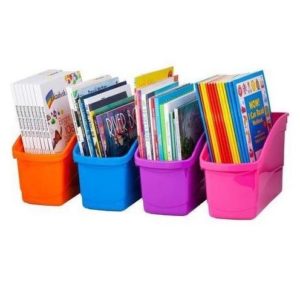
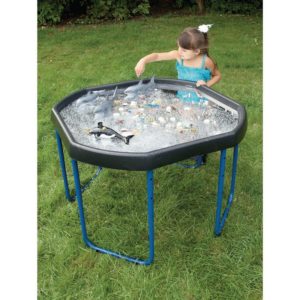
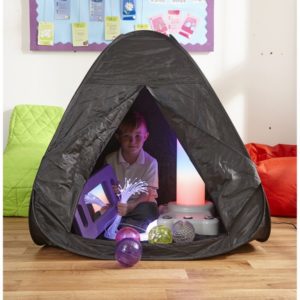
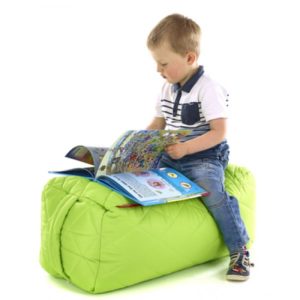
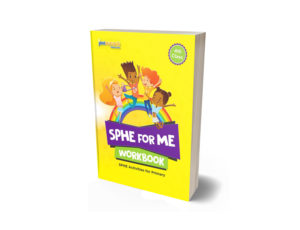
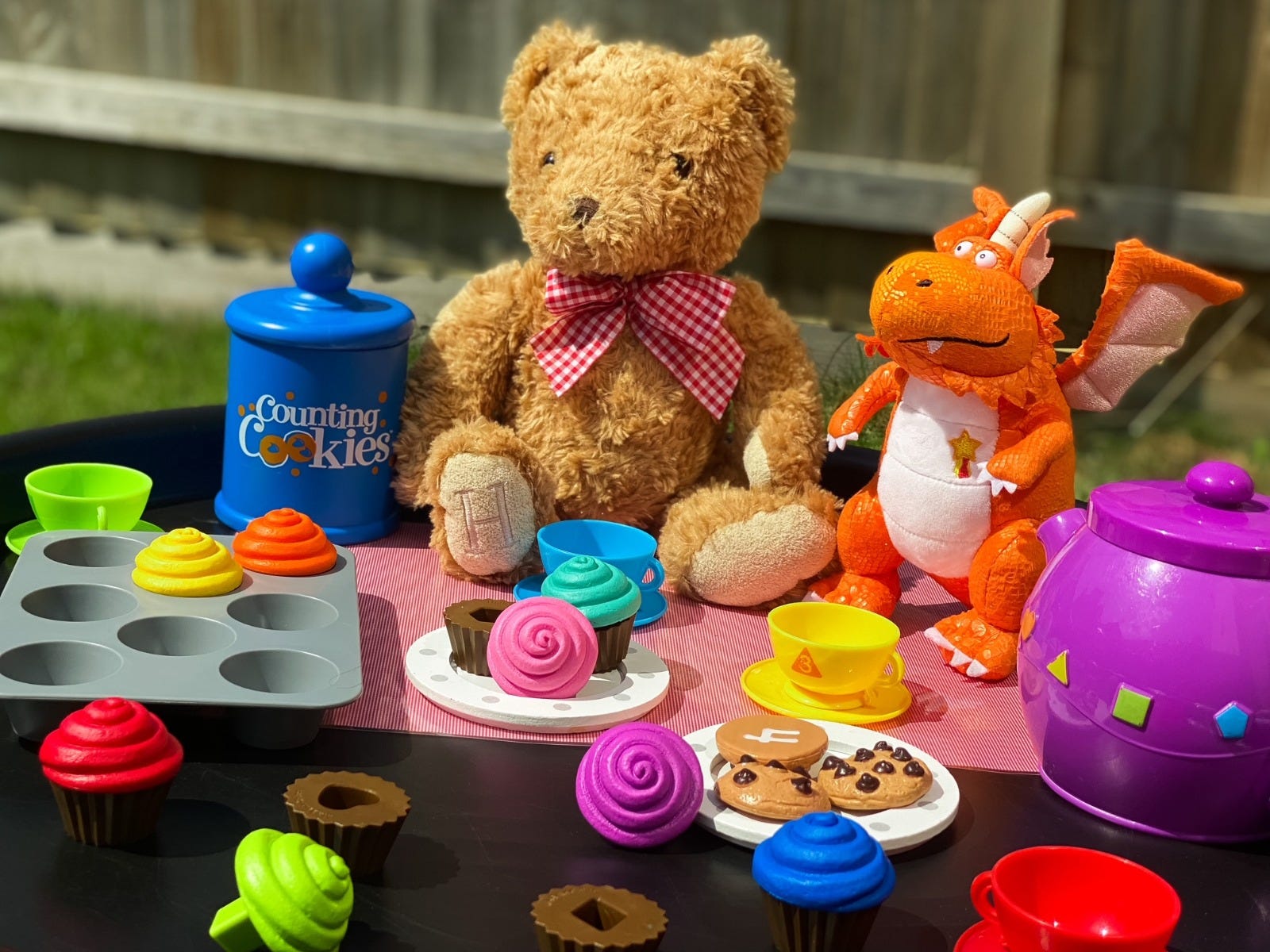
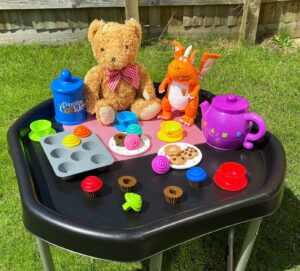
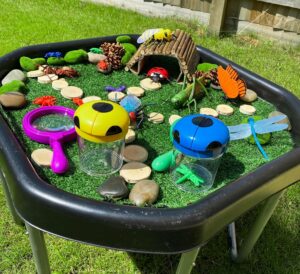



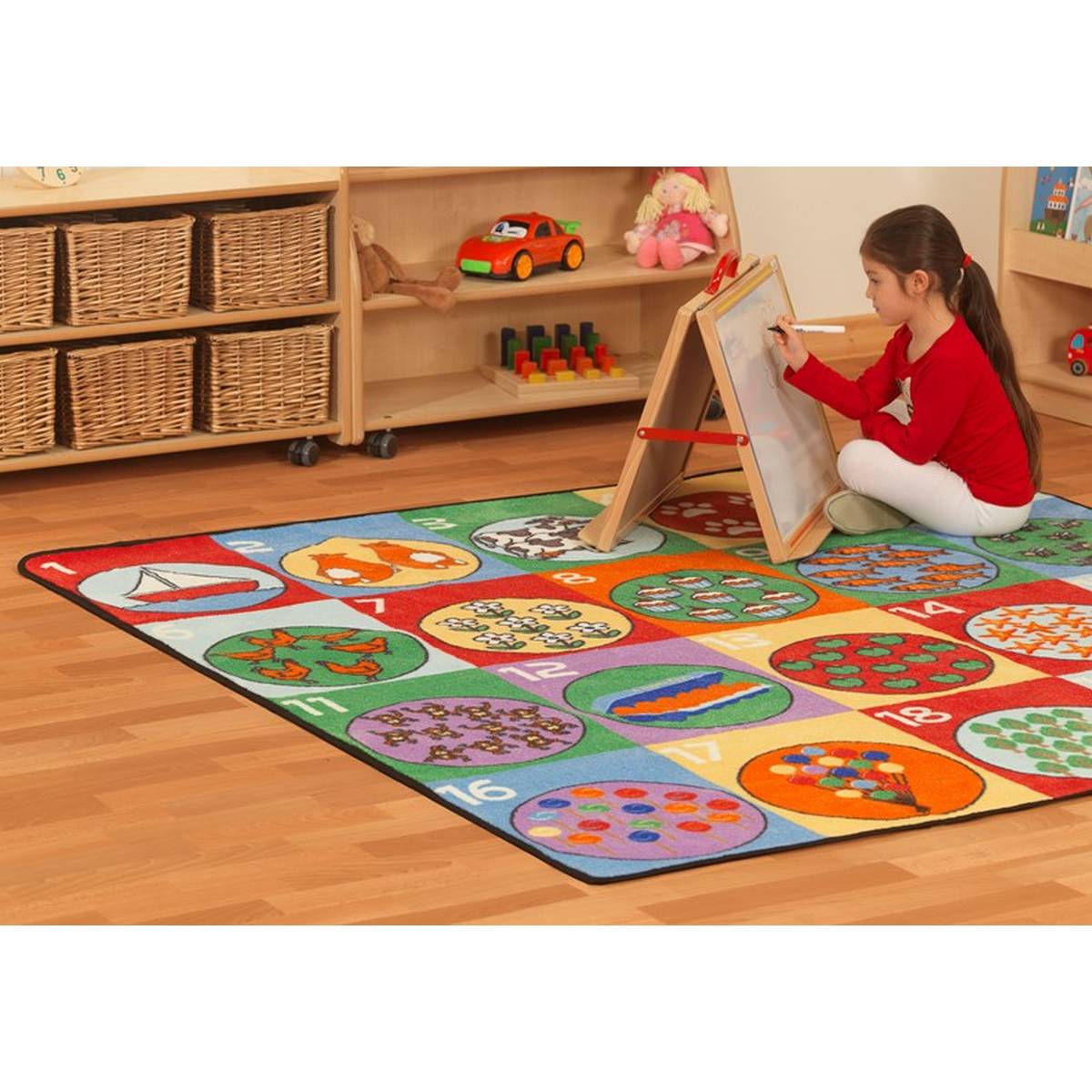 Carpets & Mats
Carpets & Mats